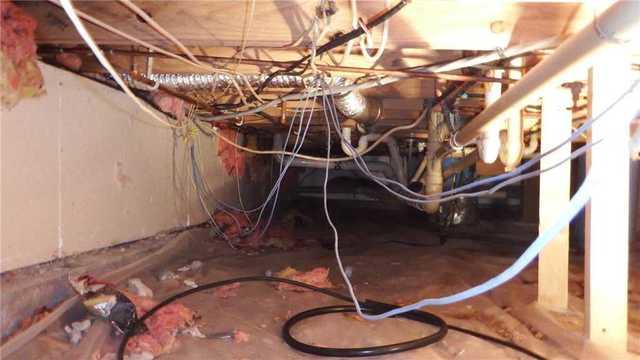
Musty Crawl Space
The crawl space certainly isn't the worst one we've been in, but it had definite signs of moisture issues, like mold, dirt, and debris littering the ground.

Crawl Space Vents Cause Trouble
Crawl space vents were once thought important for airflow and drying out a crawl space. This has since been proven false and detrimental to a crawl space, as an open vent allows moisture, dirt, and any number of bugs or animals access to your crawl space and home. Note how dirty the insulation is near the vent.
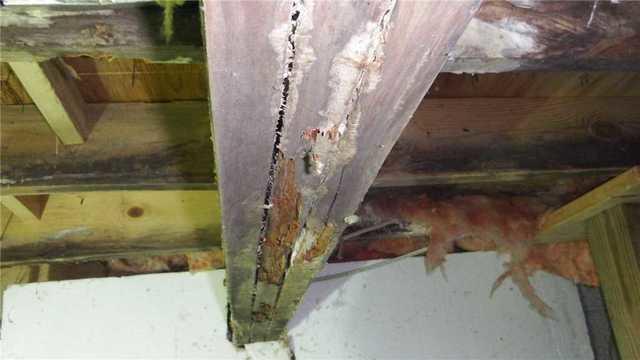
Cracking Support Beam in Crawl Space
In addition to causing mold, one of the biggest dangers of a wet crawl space is the degradation of wooden beams and joists. Constant humidity allows wood to soak up the water and decay. This can cause floors to sag or even to fall completely.
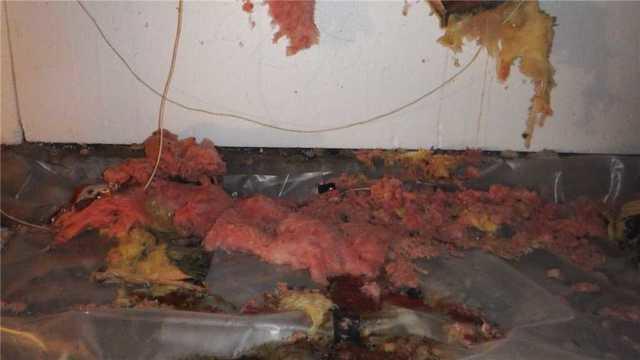
Fallen Insulation
Fiberglass insulation is common but a very bad choice for crawl spaces. As it absorbs moisture, it loses effectiveness and eventually just falls to the ground, as shown here. The paper backing on fiberglass insulation is also known for harboring mold.

Moldy Beams in Crawl Space
The beams that make up the subfloor to the house are riddled with mold, which will eventually make the floor sag as the beams break down.
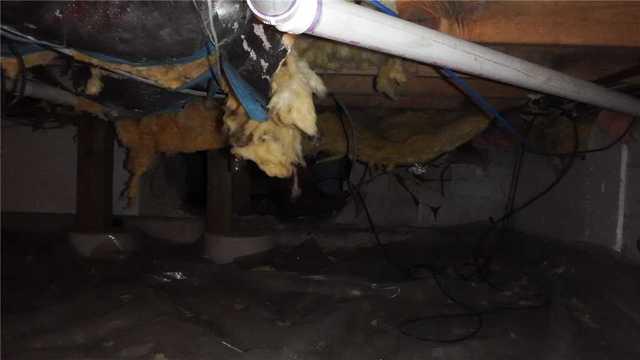
Poorly Insulated Crawl Space
There are a few warning signs in this picture. First, the plastic sheeting on the ground is not a true barrier, but just laid out over the dirt. Second you can see the fiberglass insulation mentioned before starting to fall.
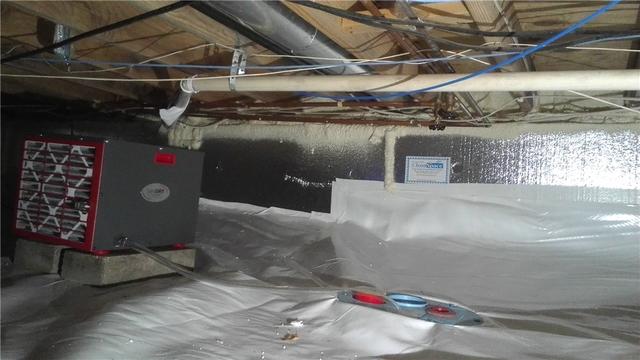
Keeping Water Under Control
The SmartDrain in the floor and the SaniDry Sedona will keep incoming and ambient moisture from affecting the crawl space.
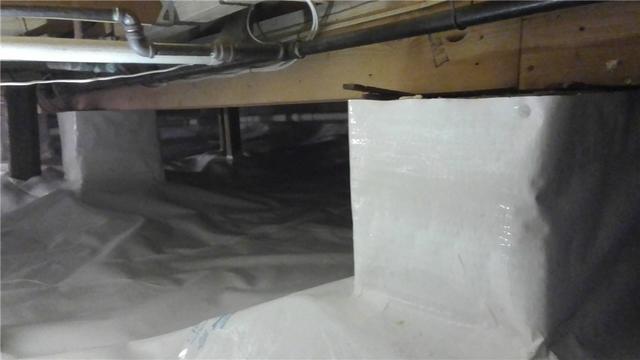
Wrapping Piers for Extra Protection
In addition to covering the walls and floor, we wrap support piers with CleanSpace to extend the protection and prevent decay and mold caused by water.

Clean, Dry Crawl Space
(Pardon our work light in the front) With CleanSpace in place, we've converted a wet, musty crawl space into something clean and dry and less frightening.









